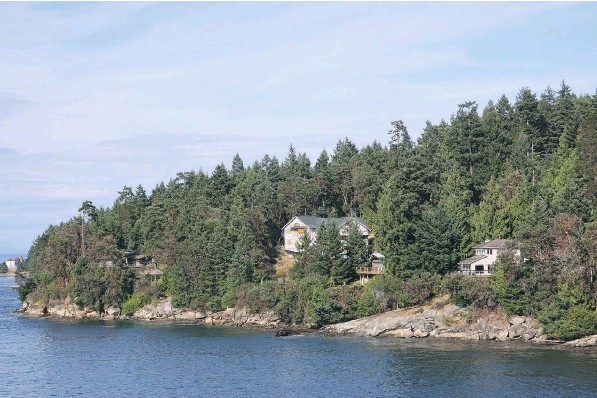Plenty of variety on offer at Skyridge in Squamish
SHAWN CONNER
The Vancouver Sun
Project name: Skyridge
Project size: a 20-acre site comprising condos, townhouses, duplexes and 30 single-family lots
Residence size: 680 — 2,300 square feet
Price: $659,000 — $859,000
Developer: Diamond Head Development
Architectural design: Murdoch & Company Architecture and Planning
Interior design: Tracey Ford/Ford Design
Website: skyridgesquamish.com
Sales centre: 5 — 40437 Tantalus Road, Squamish
Contact: Jennifer Sale, Sutton West Coast Realty
Phone: 604-723-3525
Hours: 2 p.m. — 5 p.m. Saturdays, or by appointment
Construction: due to begin November 2016; phase I completion fall 2017; phase II early 2018; final phases the end of 2018/early 2019
Prospective homeowners wanting a piece of Squamish — or at least a part of the Squamish sky — need look no further than Skyridge.
When complete, the 20-acre site will encompass townhomes, duplexes and one-, two- and three-bedroom condos. In addition, two subdivisions of 15 lots have been set aside for single-family houses.
No matter what kind of home, though, residents will experience the beauty of the supernatural part of the province.
“Skyridge is perched on a mountain,” said Jason Wood, Diamond Head Development’s founder and general manager.
“It literally has 360-degree views. You stand up on that, you turn around and pretty much see in any direction. We have gorgeous views of the [Stawamus] Chief and the Tantalus range. Our site is bordered to the north by a creek. With a creek always comes an environmental area, so we have a buffer of green space in perpetuity to the north of our project.”
So far, the developer has sold out the first subdivision and is selling lots on the second. Phase I and II, which include 20 townhomes (of approximately 2,100 square feet) and 12 duplexes (2,300 square feet) have also gone on sale. (The final phase, phase IV, includes the final eight duplexes and six townhomes.) The third phase planned is a condominium building with 44 “skysuites,” so called because of their location on the site’s highest elevation, Wood said.
“When you’re standing on the rooftop decks that we’re providing, you will have a 360-degree view. You’re literally up in the sky.” The skysuites will be one-, two- and three-bedroom units that range from 680 to 1,500 square feet.
“Basically, you’re up, you have this 180 – it’s 360 because with the skysuites it will be 360 — you get this huge open ceiling that you just can’t get in other neighbourhoods that are boxed in,” said sales manager Jennifer Sale.
The elevation from the bottom of the Dowad Drive/Tantalus Road intersection to the site’s top road is 200 feet.
“How do we get such great views? This is why. You don’t really notice it when you’re driving up. We’re out of the flood plain, which is a big deal in Squamish. You can have living space on lower levels. I think the development is going to mark a new benchmark for quality in Squamish.”
The variety of product is part of the appeal, Sale said.
“You can get someone living in a one-bedroom in the same neighbourhood as someone who’s built a million-dollar home,” she said. “It’s a real mixed demographic. We’re going from first-time buyer to empty nesters.”
The site will have green space with new trails connecting to established mountain and walking trails. And the developer has come to an agreement with the Squamish Montessori school to build an independent school on the site, with 50 daycare and 100 to 150 elementary spots.
“A lot of the schools are outgrowing their space, and independent schools that are renting out their space don’t have anywhere to go,” Sale said. “So he (Wood) basically has created that for them.”
Exteriors of the builder’s homes will be West Coast modern in design. For lot-buyers, Diamond Head has drawn up a set of design guidelines to ensure “that whatever somebody builds looks appropriate with the rest of the product we’re building,” Wood said.
Features include overheight ceilings and wide-plank, oak-engineered hardwood flooring, expansive decks and patios, open-plan kitchens, a choice of two colour palettes and two upgrade packages.
Interior design comes courtesy of Georgie Award-winning Tracey Ford, of Ford Design. As well, the homes will follow Built Green specifications, including Energy Star windows and sliding doors, LED designer lighting and solar-ready design.
“It’s such a rare site and offering,” Sale said. “There’s no better option in Squamish. For the location, the views, the value. Our prices are great, and the quality of construction and finishings. It’s a rare elevated 20-acre site within minutes of all amenities. And it’s right next to the trails and green space. You can walk to Alice Lake in 20 minutes. It’s got everything anyone can ask for in a new product.”
A lot of the early interest in the homes has come from within Squamish itself, says Sale.
“I think people within Squamish recognize what a unique site it is, so they’ve been the early ones to act.”
Recently, Vancouverites have been getting on board too. “It doesn’t take them too long to figure it out as well. They do need to compare and figure out the lay of the land, so to speak, and what else is available in Squamish. And they’re coming back after they’ve done their research and starting to make offers now.”
It didn’t take much research for Lara Spence and her husband Jeff to decide to put a down payment on a duplex.
“We wanted to get in early because we knew the prices would probably keep going up,” Lara said. “The shape of the land, where it is, the views are going to be quite good for the duplexes. For the townhouses as well. So we wanted to get in because we knew if the prices went up, as applied to the views getting better going further up the hill, it would be better to get in early.”
The Spences’ plan is to move from their house in Vancouver’s Fraserview neighbourhood to their Squamish duplex when Jeff, a schoolteacher, retires. At first, Lara suggested North Vancouver as a retirement location, to be close to the mountain bike trails there.
“But he said, ‘I can’t go mountain biking on the North Shore when I’m 65. I’ll kill myself!’ So we said, ‘Let’s look at Squamish.’ It’s a beautiful community, it’s the outdoor capital of Canada, the mountain-biking and hiking there is amazing, and we have a bunch of friends who have moved there or are thinking of moving there. So we thought about Squamish.
“And then, Skyridge, because of the view aspect, and it’s brand new — I’ll never have the new house experience in Vancouver, for the price.”
© 2016 Postmedia Network Inc.



